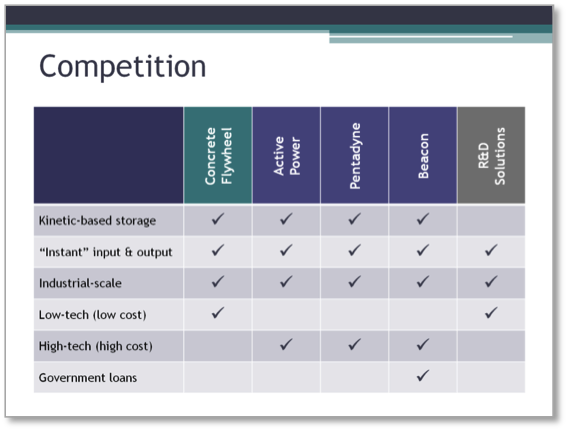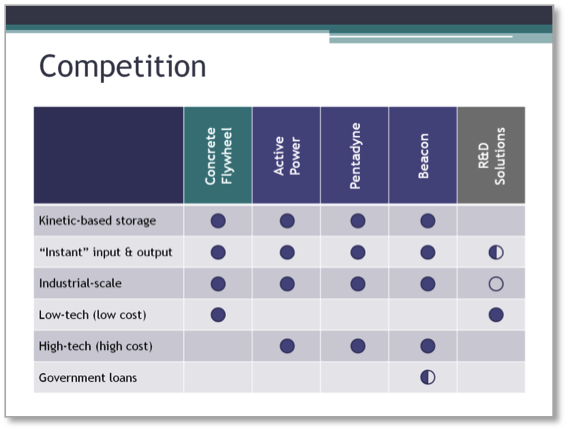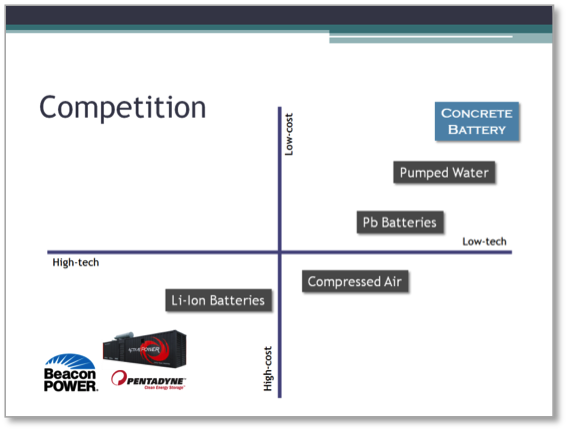Matrix or magic square?
EVERY COMPANY has competitors. For most companies, there are obvious direct competitors who have products or services in the market with similar features and benefits. For other companies, there are indirect competitors, who offer somewhat overlapping solutions.
For example, two coffee shops across the street from each other are direct competitors. Meanwhile, those coffee shops both compete with home coffee makers, with companies selling energy drinks, and with the latest wave of juicing bars, who are advocating a healthier drink to start your day.
Only a few companies solve a problem that has been overlooked by others, and their solution is unique. However, even in these cases, the customer needs to acknowledge the problem exists before they will buy the solution. In many of these cases, the problem is known but not sufficiently important to merit any solution. Or, in other cases, the problem is currently being addressed in a haphazard manner using existing resources (anything from a spreadsheet or email to paper and pencil).
RULE 25:
All companies have competitors.
A totally naïve entrepreneur might claim that “no one else is solving this problem.” A less naïve entrepreneur will boast that they have the best solution, even when competitors in the market have more paying customers. An experienced entrepreneur will instead target a specific set of customers that the competitors are overlooking, a niche market that your company can serve better than anyone else.
Be realistic in your claims about competitors, both to the audiences you pitch to as well as to yourself. Research your market thoroughly, find as many direct and indirect competitors as possible, and dig down to see what their solution offers, how they talk about their product or service, and their pricing, etc.
Don’t overlook those indirect competitors. Entrepreneurs are too often surprised when their potential customers are already solving the specific problem with some indirect solution.
RULE 26:
Do a thorough job in researching the competition.
Pitching the Competition
If, after all that research, there really isn’t any competition or the “competition” is for customers to just follow along with the status quo and do nothing new and deal with the problem as best they can, you can simply state that fact in your pitch. In the Ensibuuko pitch, this is acknowledged in the start of the Solution section of their pitch.
Ensibuuko—[The solution, second draft]

“In Uganda, the solution for rural farmers is the Savings and Credit Co-ops, known as SACCOS. They are typically organized by the farmers, who pool their savings and provide loans to the members. However, today, most of these organizations operate using paper and paperwork, which leads to losses from errors and corruption.”
However, for companies with competition, there are two popular ways to visualize that information: a “competitive matrix” and a “magic square.”
Competitive Matrix
A competitive matrix is a table showing five to seven product features and benefits, scoring each against your own company, and three to five other named competitors or categories of competitors.
Concrete Battery—[Competition] via Competitive Matrix

“Three other companies have industrial-scale flywheel products in the market. All of their solutions use high-tech, high-cost processes to maximize the energy storage in a minimal amount of space. By optimizing for volume and by using high-tech solutions, their costs are too high for wide-scale adoption. In addition, many researchers are testing other electricity storage options, such as storage of compressed air, hydrogen generation, and batteries. None of these have more than a few trial customers, and none are on track to be a lower-cost option to Concrete Battery’s solution.”
Note that, in this matrix, your company and your competitors are listed in the columns, and the features and benefits in the rows. Your company is listed in the leftmost column. There is no logical reason for these details, but it is the most common pattern. Other variants (such as companies in rows) require the audience to stop and think in order to understand them, and, as always, you don’t want your audiences to stop listening to you while trying to think through your design.
RULE 27:
In a competitive matrix, your company is the leftmost column, your competitors are in the other columns, and the features/benefits are in the rows.
The goal in presenting the competitive matrix is not only to convey the competitive analysis, but also to have the audience believe that information, all without appearing to be overly biased. They will understand that the information is undoubtedly biased, but it cannot appear so biased as to be dismissed. To do this, it is important that your company not be shown fulfilling all of the listed features and benefits. Instead, order them by importance, and pick one or two that your company does not do at all or that you aspire to add in the future.
RULE 28:
In a competitive matrix, it is important that your company does not appear perfect.
Limit the matrix to fewer than ten features and benefits, and limit the number of competitors to seven, at most. If you have more competitors, aggregate them into named categories, leaving only your most direct competitors named in the column headers.
RULE 29:
In a competitive matrix, show only five to seven features/benefits and no more than seven competitors, aggregating them if needed.
If a simple yes/no checkmark display cannot capture the subtleties of the features/benefits, there are two options for displaying more depth. First, you can vary the size of the mark: a blank cell indicating “not implemented”; a small mark indicating “somewhat implemented”; and a large mark meaning “well/fully implemented”. Or, for yet more detail, you can use “Harvey Balls,” which are unfilled circles, half circles, and filled circles most commonly seen in the reviews within Consumer Reports magazine.
In some cases, such as comparing pricing models between competitors, more detail is needed. If it would be compelling and important to include numbers in your competitive matrix, then include numbers. However, try to limit such detail to one or two rows at most. If you feel compelled to include more detail, create a slide in the appendix, which you can then refer to in answering questions.
RULE 30:
If the competitive matrix requires more details, use varying-sized marks, Harvey Balls, or actual values.
Concrete Battery—[Competition] via Competitive Matrix and Harvey Balls

Magic Square
The alternative to a competitive matrix is a magic square. In this visualization, the market is portrayed as a landscape, with the competitors measured along two (and always exactly two) criteria. For some companies, the choice of the two axes is obvious. For others, it requires far more thought.
Complicating this choice further is the rule that your company must lie in the upper right corner of the matrix. This is due to the unconscious perception that up is better than down and right is better than left, thus leading the upper-right corner to equal “best.”
RULE 31:
In a magic square, pick two measures, and plot the competition such that your company lands in the top-right corner.
Concrete Battery—[Competition] via Magic Square

“Three other companies have industrial-scale flywheel products in the market. All of their solutions use high-tech, high-cost processes to maximize the energy storage in a minimal amount of space. By optimizing for volume and by using high-tech solutions, their costs are too high for wide-scale adoption. The only competition with wide-scale adoption is pumped water at hydroelectric plants, but that solution works only in locations with existing hydro facilities. Other technologies are being researched, such as storage of compressed air within salt domes and batteries of various chemistries. None of these have more than a few trial customers, and none are on track to be a lower-cost option to Concrete Battery’s solution.”
Note that in this magic square, there is room to show competitors but across only two measures, instead of the five to seven measures in the competitive matrix.
Pick one of these visualizations or the other for your pitch. If they are both useful, create both, placing one in the appendix.
Be Brief
Once you have created a competitive matrix or magic square, you may be compelled to walk your audience through every detail. Ironically, that is the last thing they want.
The point of this slide is to show that you’ve done a thorough job analyzing the competitive landscape. The well-designed, well-thought-through matrix or square accomplishes this goal.
In a very short pitch, e.g., ten minutes or less, limit your comments to one or two highlights. In a longer pitch, limit your comments to only three or four comments.
Highlight that key differences. What makes your service better, faster, or lower priced? What makes your competition oblivious to the needs you see in the market? What are you missing and why is not urgent to do first?
Ideally, you cover the uniqueness of your startup within those few comparisons, rather than on a separate slide.











